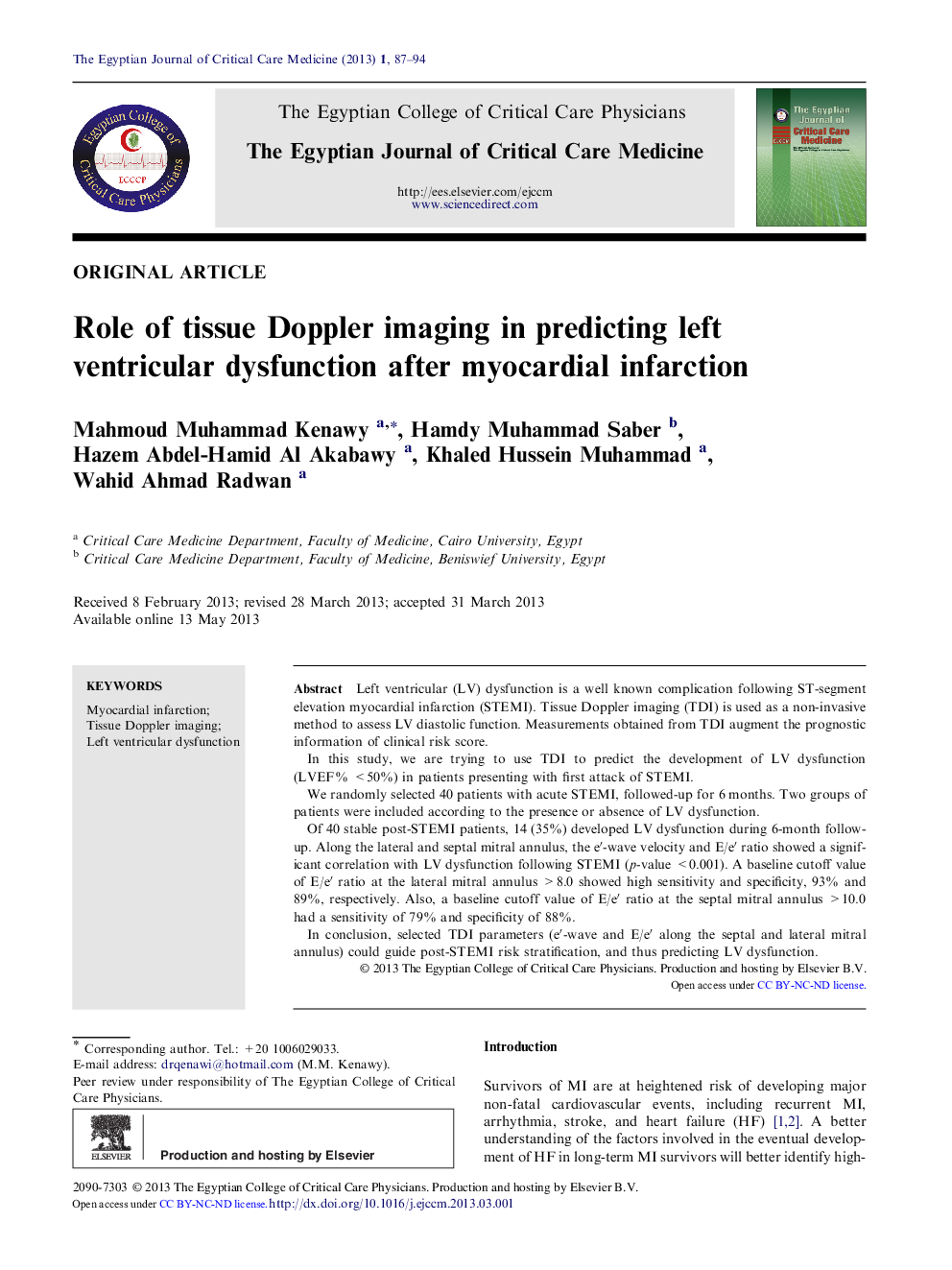| Article ID | Journal | Published Year | Pages | File Type |
|---|---|---|---|---|
| 2910917 | The Egyptian Journal of Critical Care Medicine | 2013 | 8 Pages |
Left ventricular (LV) dysfunction is a well known complication following ST-segment elevation myocardial infarction (STEMI). Tissue Doppler imaging (TDI) is used as a non-invasive method to assess LV diastolic function. Measurements obtained from TDI augment the prognostic information of clinical risk score.In this study, we are trying to use TDI to predict the development of LV dysfunction (LVEF% <50%) in patients presenting with first attack of STEMI.We randomly selected 40 patients with acute STEMI, followed-up for 6 months. Two groups of patients were included according to the presence or absence of LV dysfunction.Of 40 stable post-STEMI patients, 14 (35%) developed LV dysfunction during 6-month follow-up. Along the lateral and septal mitral annulus, the e′-wave velocity and E/e′ ratio showed a significant correlation with LV dysfunction following STEMI (p-value <0.001). A baseline cutoff value of E/e′ ratio at the lateral mitral annulus >8.0 showed high sensitivity and specificity, 93% and 89%, respectively. Also, a baseline cutoff value of E/e′ ratio at the septal mitral annulus >10.0 had a sensitivity of 79% and specificity of 88%.In conclusion, selected TDI parameters (e′-wave and E/e′ along the septal and lateral mitral annulus) could guide post-STEMI risk stratification, and thus predicting LV dysfunction.
